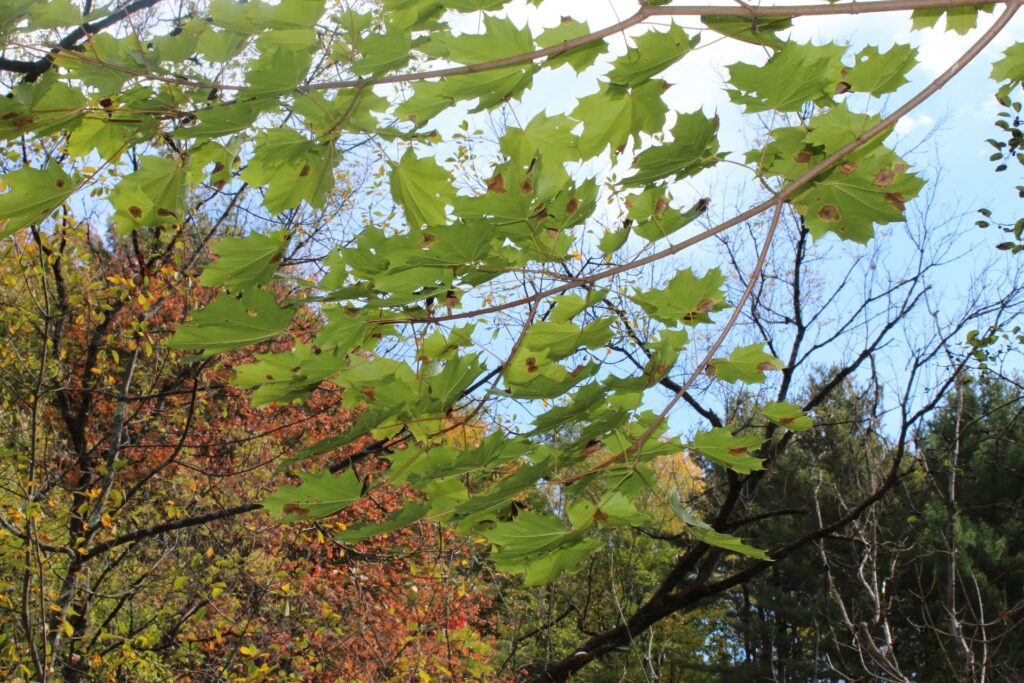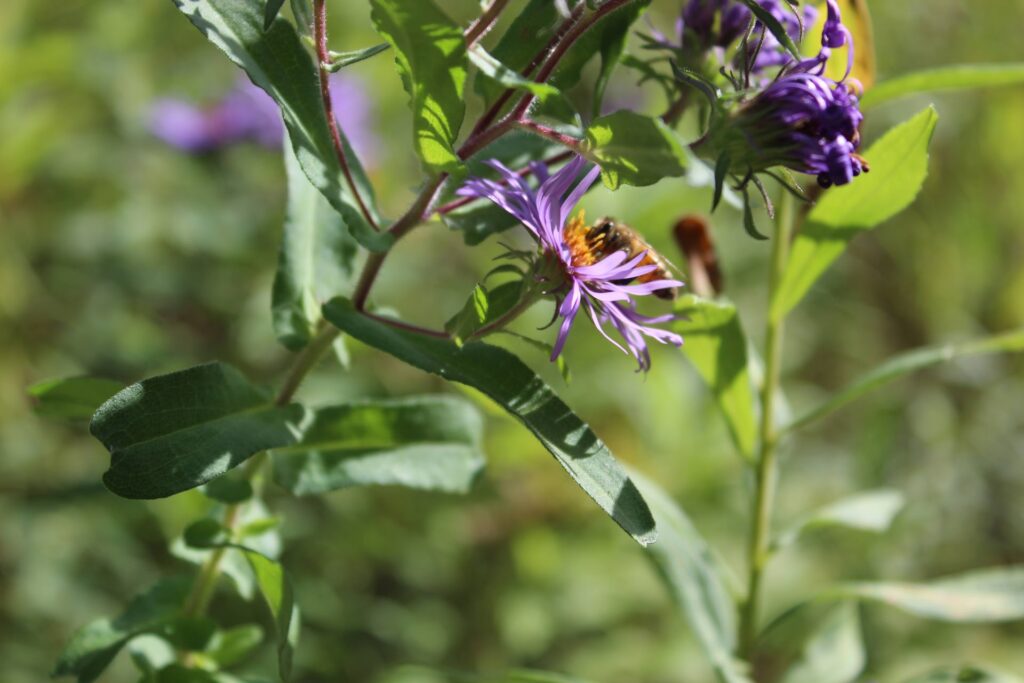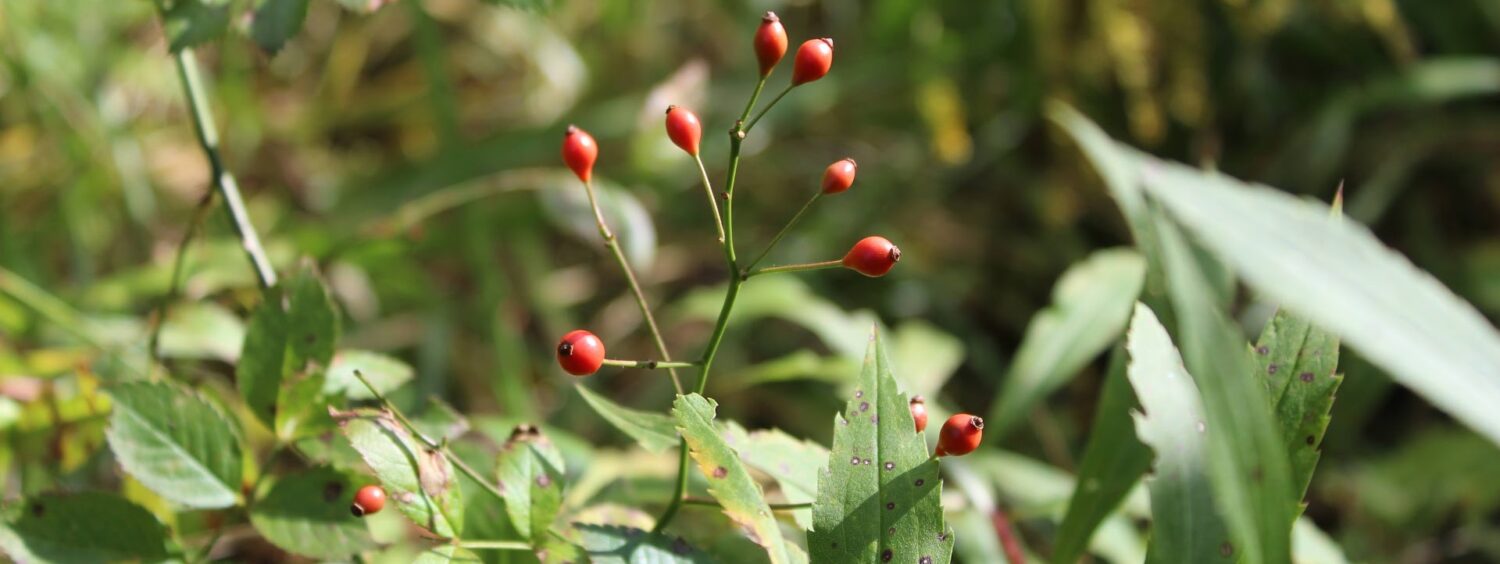Plant life lays at the center of any ecosystem’s function by providing a habitat and food sources for organisms alongside impacting the natural processes that shape the area. To better understand the phenology of Centennial Woods, let’s explore the vegetation!

Upon approaching the stream, Norway maples, red maples and white ash are the predominant trees. It is hard to miss the abundance of goldenrods and asters surrounding the bridge. These flowers attract pollinators that boost the growth of plants and encourage biodiversity within the ecosystem. Other plants within the understory include meadowsweets, the invasive buckthorn and poison ivy, so be careful!

I was eager to further explore the area, so I leaped across the stream and waded through the thick and often thorny (ouch) understory. Eventually, I was able to spot cattails among tall grass, indicating moist soil. The presence of these perennials came as no surprise due to winding stream that snakes through the area. Saturated soil can also account for the lack of trees in the clearing.

